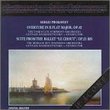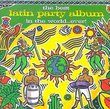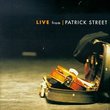| All Artists: Peter Garland Title: Cantares De La Frontera / Three Strange Angels Members Wishing: 1 Total Copies: 0 Label: O.O. Discs Release Date: 4/20/1999 Genres: Jazz, Special Interest, Classical Styles: Experimental Music, Chamber Music, Historical Periods, Modern, 20th, & 21st Century, Instruments, Electronic, Symphonies Number of Discs: 1 SwapaCD Credits: 1 UPCs: 786497227228, 789481005222 |
Search - Peter Garland :: Cantares De La Frontera / Three Strange Angels
 | Peter Garland Cantares De La Frontera / Three Strange Angels Genres: Jazz, Special Interest, Classical
|
CD DetailsSimilar CDs
|
CD ReviewsPeter Garland, musical Chronicler of the Desert Southwest Jan P. Dennis | Monument, CO USA | 03/06/2005 (5 out of 5 stars) "Truly, a modest calling, though high. And this man fulfills it with deep beauty etched in sadness, entirely apropos of the landscape--nay, soulscape--of this mysterious, mystical territory. Border Music, a kind of companion disc to his transcendent Walk in Beauty, further refines and defines the Southwestern sensibility that resides in the Four Corners area of the United States.
Opening with the achingly beautiful, haunting, windswept solitude of "Cantares de la Frontera," magically brought to life by Rosalind Simpson on harp, it's as if the entire Southwest ethos shyly peaks out from the ancient inscrutability of New Mexico's Shiprock. We're situated on the magnificent, magisterial Colorado Plateau uplift, in the precincts of a simultaneously blasted and consecrated land, holy, profane, and beyond imagining. To capture this uncompromising terrain by means of a single, awkward instrument--solo harp--is certainly a kind of virtuosity seldom if ever encountered. To evoke it with such power and feeling boggles not only the mind, but the imagination. The magic continues with "The Three Strange Angels," featuring the University of New Mexico Percussion Ensemble. Blast of piano and timpani signal the coming of one of those entirely unexpected summer dust storms/rainstorms, here anthropomorphized, which, if encountered at dusk, manifest a pure redness of sky, almost a roseate presence, beyond comprehension and reason, that fades almost as quickly as it appears, as if one's sense organs are tricked by the eldritch conjunction of old magic and ancient rocks. "Three Songs of Mad Coyote" continues the vibe. Bull roarers, tom-toms, bass drums, lion's roar, and two pianos situate this eerie music smack-dab in the middle of the blasted landscape of Northwestern New Mexico, as desolate a geography as any on this planet. No wonder coyote's mad (as in crazy, not angry): his home scarcely accommodates life at all, let alone his scraggly ass. The next two numbers, "Obstacles of Sleep" and "Apple Blossom," again feature the UNM Percussion Ensemble. The first, an evocation of cop sirens keening through the desert night, uncannily conjures an aspect of Southwestern life--Anglo intrusion into native ways--that all too often characterizes life in the Four Corners. It matters little that the composer identifies the keening sirens as "The ghost of Edgar Varése" and situates the music within the purview of '30s and 40s percussion pieces of Lou Harrison and John Cage; its sensibility totally tracks with what I've identified as the trauma of Native/Anglo encounter. "Apple Blossom" is a hoss of a different color. Resonating with a deep mysteriousness of erotic power, poignantly evoked by the subtlest deployment of percussive nuance, so ephemeral that, dreamlike, it scarcely exists, it conjures a soundscape of infinite secrecy and, almost but not quite, shame. Lingeringly lovely, fleeting, evanescent, insubstantial, it resides just beneath consciousness, drawing out chthonic emotions that scarcely register on the emotional soulscape. The last track, "Old Men of the Fiesta," Partakes of a deep mysteriousness almost beyond comprehension. Evoking centuries-old ceremonies of the peoples of Northwestern Mexico, it occupies a musical space somewhere between ritualized dance and pagan hymnody. Ur-elegiacism, that's what we've got here. Tough to top. You don't need to live here, as I do, to experience the wonder and miracle of this grand music, but I suppose it helps. As my wife and I experienced during a springtime tour of the Lake District of northern England for the first time, there really are fields of daffodils carpeting the landscape, just waiting for a Wordsworth to delineate their glory, even as Peter Garland evokes the glory of the Desert Southwest." |

 Track Listings (14) - Disc #1
Track Listings (14) - Disc #1

